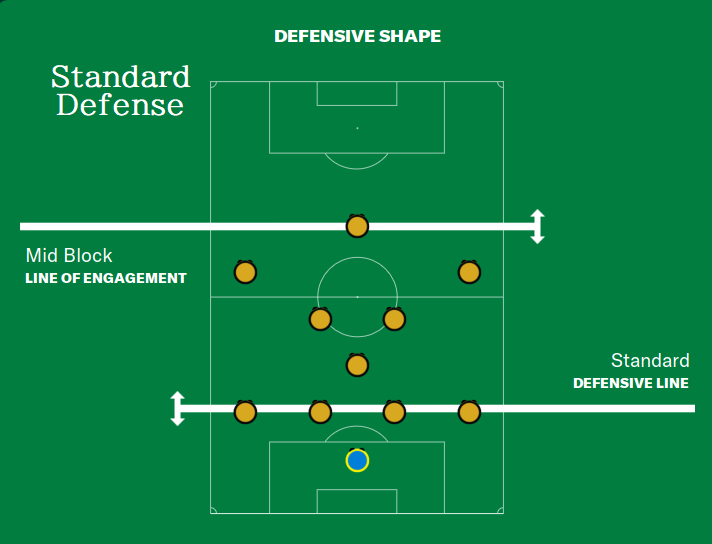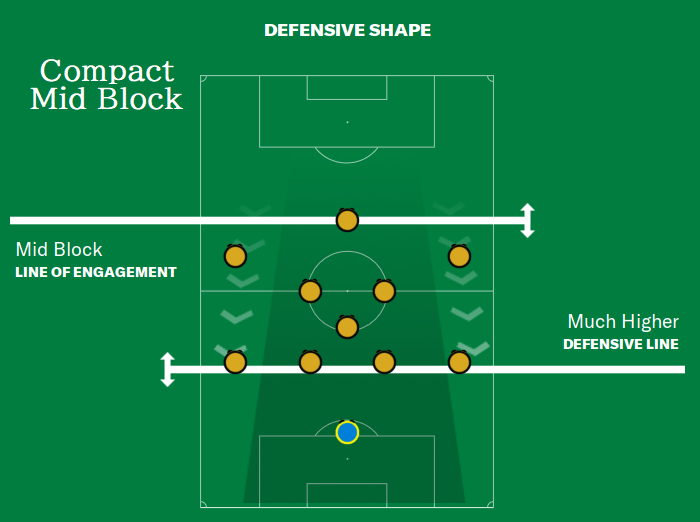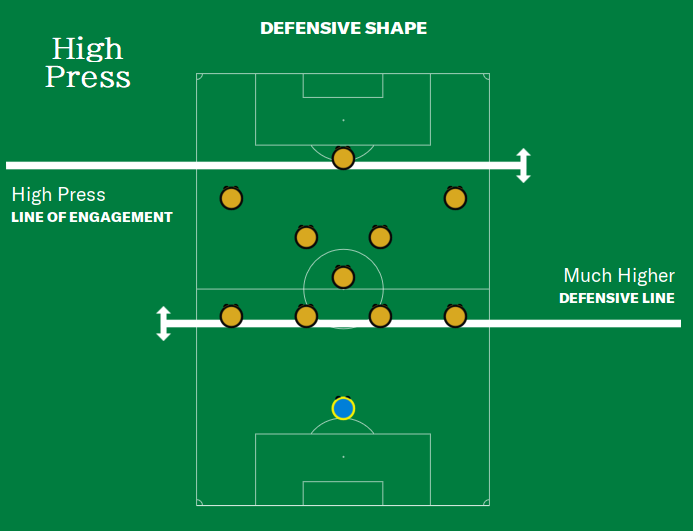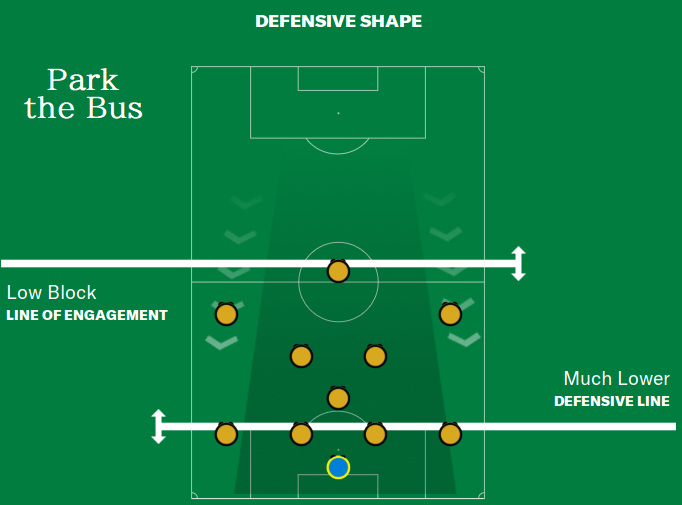Standard defensive line
If you are unsure of what defensive line to set for your team, starting at standard and shifting downwards if you are too open at the back or upwards if your defense is solid and want to put more pressure on the opposition is a good place to start.
The standard defensive line takes your team mentality into account and can be higher if you are on the more attacking mentalities and lower on the more defensive ones.
If you are facing a tight game that can go either way because the teams are evenly balanced, starting with a standard defensive line can help you evaluate what is going on in the first few minutes, then shift to what you feel is appropriate.

The mid-block
What is a mid-block?
A mid-block is an out-of-possession strategy focusing on protecting the middle third of the pitch. The priority is to remain compact enough to stop the opposition from playing through the team. The most attacking players do not engage the opposition too high up the pitch, and the defensive line does not drop too deep towards their own goal. Some space is left in behind the back line, in which the goalkeeper can sweep up.
When playing with a mid-block, what do the players do when out of possession?
Once a team has dropped back into a mid-block, the priority is compactness. Distances between players (laterally) and units (vertically) should be kept to a minimum to prevent the opposition from playing through the team.
Almost all mid-blocks are made up of three lines or units, with players recovering into their primary defensive positions. This may differ from their attacking role, such as a high full-back or wing-back recovering into the defensive line.
Once the block is set, players should demonstrate control and restraint to hold their positions. Individuals should not jump out to press too often, because that would leave gaps that opponents could exploit. Similarly, a solid defensive line should be held to maintain compactness, and players should not drop too deep. Doing so would create space in between the lines. Players should look to block off potential passing lines, delay the opposition’s forward progress and screen play from side to side.


High Press
The high press is defined by a collective and organised attempt to win the ball high up the pitch, with this referred to in some quarters as ‘gegenpressing’.
This is different from the notion of individual players simply sprinting towards the ball, however, as it involves the entire team in an attempt to force the opposition to play longer balls or riskier passes into areas where there are overloads.
Similarly, an organised press may look to target players who are weak in possession, forcing players to pass them the ball and quickly closing down the space and applying disciplined pressure.
Even when executed well, this is a relatively high-risk strategy that requires the participation of the entire team, who must press in sync with one another and adopt a high defensive line at all times.
The best exponents of the art include Liverpool’s Jurgen Klopp, who coined the term ‘gegenpressing’ and adopts a particularly high press in the attacking third. Regularly, Liverpool complete between 160 and 180 presses per game collectively, which regularly ranks among the highest in the EPL.
Defending Premier League champions also adopt a collective (albeit slightly less intense) high press, with manager Pep Guardiola adopting an approach similar to the ‘three-second rule’ he deployed at Barcelona.
This requires the side to counter-press for three seconds immediately after losing possession, in order to win the ball back when their opponents have lost their shape and have players out of position.
City often adopt a man-to-man strategy when pressing high too, with even the fullbacks pushing against their counterparts in the final third.
But what’s the counter-attacking alternative? Well, this is a much lower-risk and less intensive approach, which sees sides sit in a low or medium block that’s compact and minimizes space centrally and in behind.
With this tactic, you’ll allow the opposition to have the ball and wait for players to move out of position, before applying a press, winning the ball and launching an attack into space. This often involves longer passing and direct running, particularly when looking to attack the space behind a high defensive line.
The key here is maintaining a relatively deep defensive line and structured shape when out of possession, while looking to transition quickly after winning the ball and exploiting space at a time when the opposition is stretched.

parking the bus
What is ‘parking the bus’ in football?
In football, the term ‘parking the bus’ is used when teams operate with a lot of players behind the ball when out of possession.
The system also tends to favour minimal risk in attack, with very few players committed forward to make sure that the opposition cannot break quickly when they win the ball back.
Parking the bus can cause great frustration because opponents have less room to create chances and will often be reduced to shooting from long range, with it possible that mistakes can also creep in due to tiredness as they probe for openings.



Published by